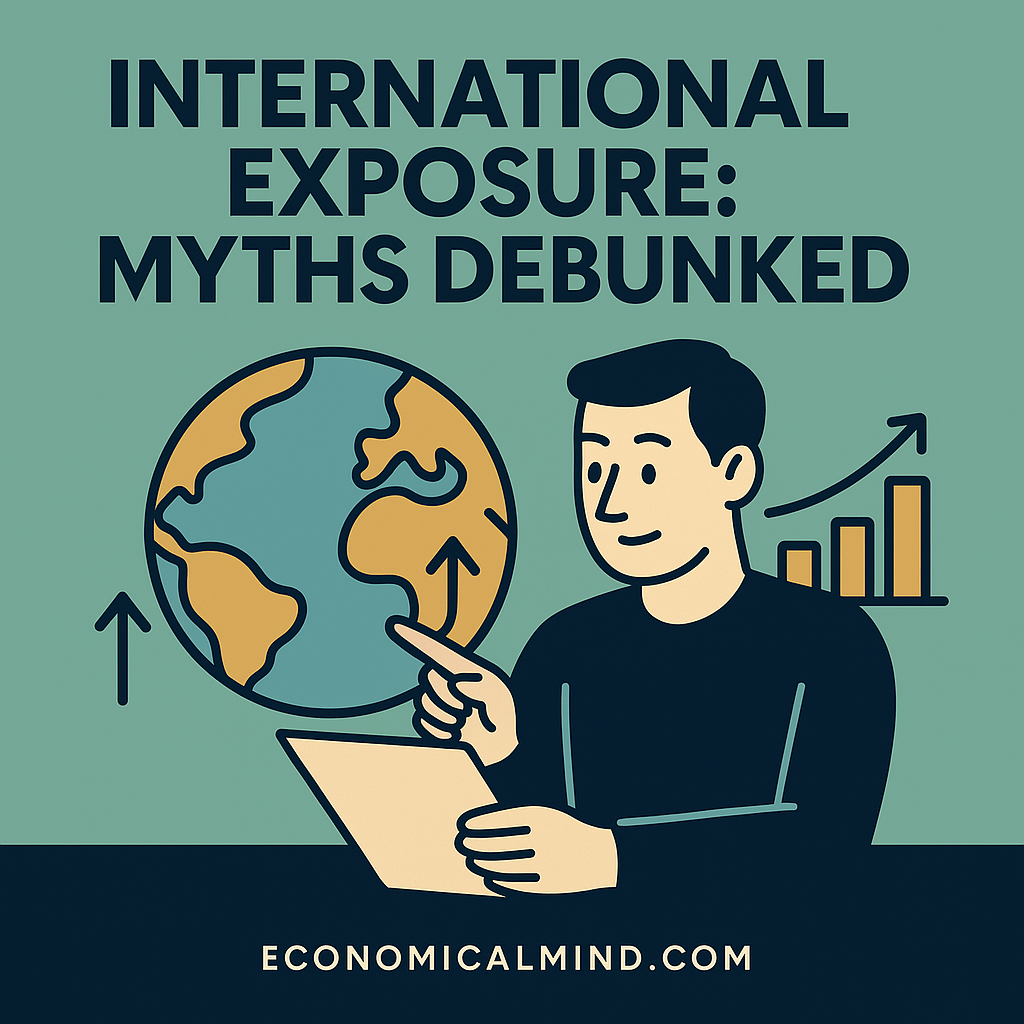
Investing beyond your home country might sound risky or complicated—but global exposure is an essential part of building a well-diversified portfolio. Unfortunately, misconceptions about international investing often lead people to stay too focused on domestic markets.
Let’s break down the biggest myths surrounding international exposure and explain why a global perspective can strengthen your long-term investment strategy.
Myth 1: Investing internationally is too risky
While international markets can face unique challenges—like currency fluctuations or political instability—they also offer powerful diversification benefits.
When one country’s economy slows, another might be expanding. By spreading investments across regions, you reduce your portfolio’s overall volatility. It’s not about avoiding risk—it’s about managing it more effectively.
Myth 2: U.S. stocks already provide enough global exposure
It’s true that many large U.S. companies operate worldwide, but that doesn’t mean you’re fully diversified. International markets include entire industries and growth opportunities that aren’t captured by U.S.-based firms.
Emerging markets, for example, can offer exposure to growing middle classes, technology adoption, and infrastructure expansion—areas often underrepresented in U.S. indices.
Myth 3: Currency fluctuations make foreign investing too unpredictable
Currencies can affect returns in the short term, but over longer periods, their impact tends to even out. In some cases, a weaker dollar can even boost returns from foreign holdings.
Many global funds also offer currency-hedged versions, which help manage exchange-rate risk while keeping international exposure intact.
Myth 4: It’s difficult to invest in international markets
In the past, accessing global investments required navigating foreign exchanges and complex regulations. Today, it’s simple.
You can gain international exposure through mutual funds, ETFs, and index funds that track specific regions, countries, or global markets—all available through most brokerage platforms.
You don’t need to buy foreign stocks directly to benefit from international diversification.
Myth 5: International investing hurts returns
This myth often stems from short-term comparisons. Some years, U.S. markets outperform; other years, international markets lead.
Over long periods, having both in your portfolio smooths returns and helps capture growth wherever it happens. The goal isn’t to “win” one market—it’s to balance opportunity and protection.
Myth 6: Emerging markets are too unstable to invest in
Emerging markets can be more volatile, but they also offer higher growth potential. Many are transitioning from manufacturing-based to technology-driven economies, with rapidly expanding consumer markets.
Including a small percentage of emerging market exposure can boost long-term returns while still managing overall portfolio risk.
Real ways to build international exposure wisely
- Use global or international index funds for easy diversification
- Consider a mix of developed and emerging market exposure
- Review fund expense ratios—international ETFs can vary widely
- Rebalance yearly to maintain desired allocation levels
- Use currency-hedged funds if short-term volatility worries you
Key takeaway
International investing isn’t about chasing faraway markets—it’s about creating balance. By moving past the myths and adding strategic global exposure, you can strengthen your portfolio, reduce risk, and position yourself for growth no matter where it happens.
